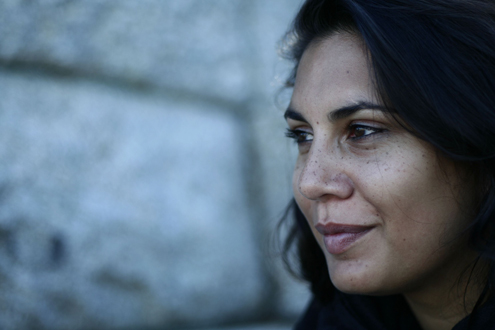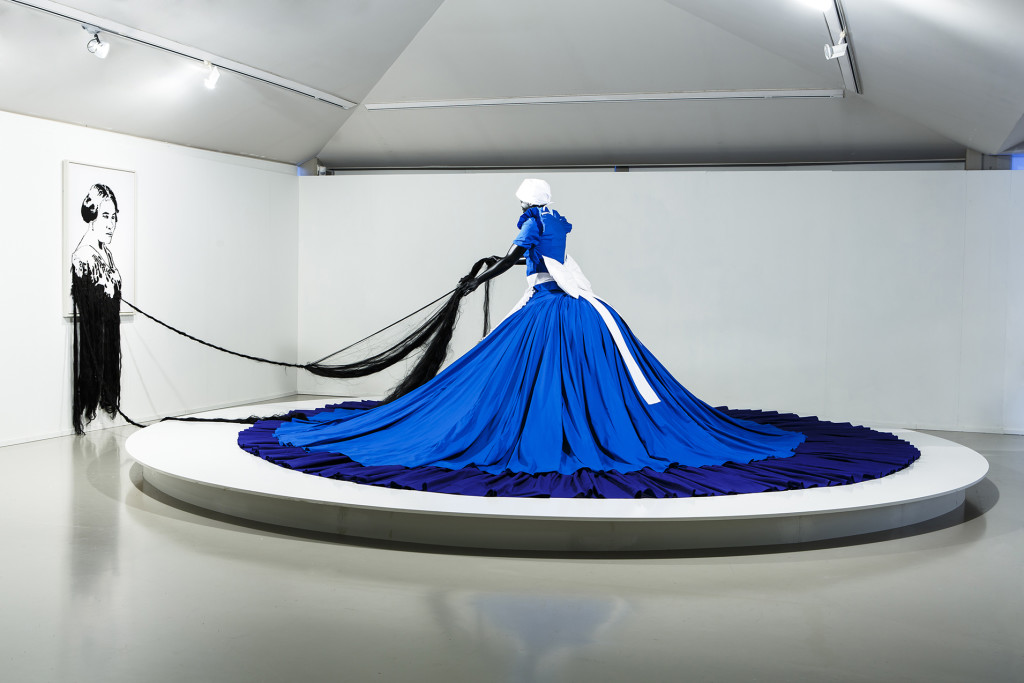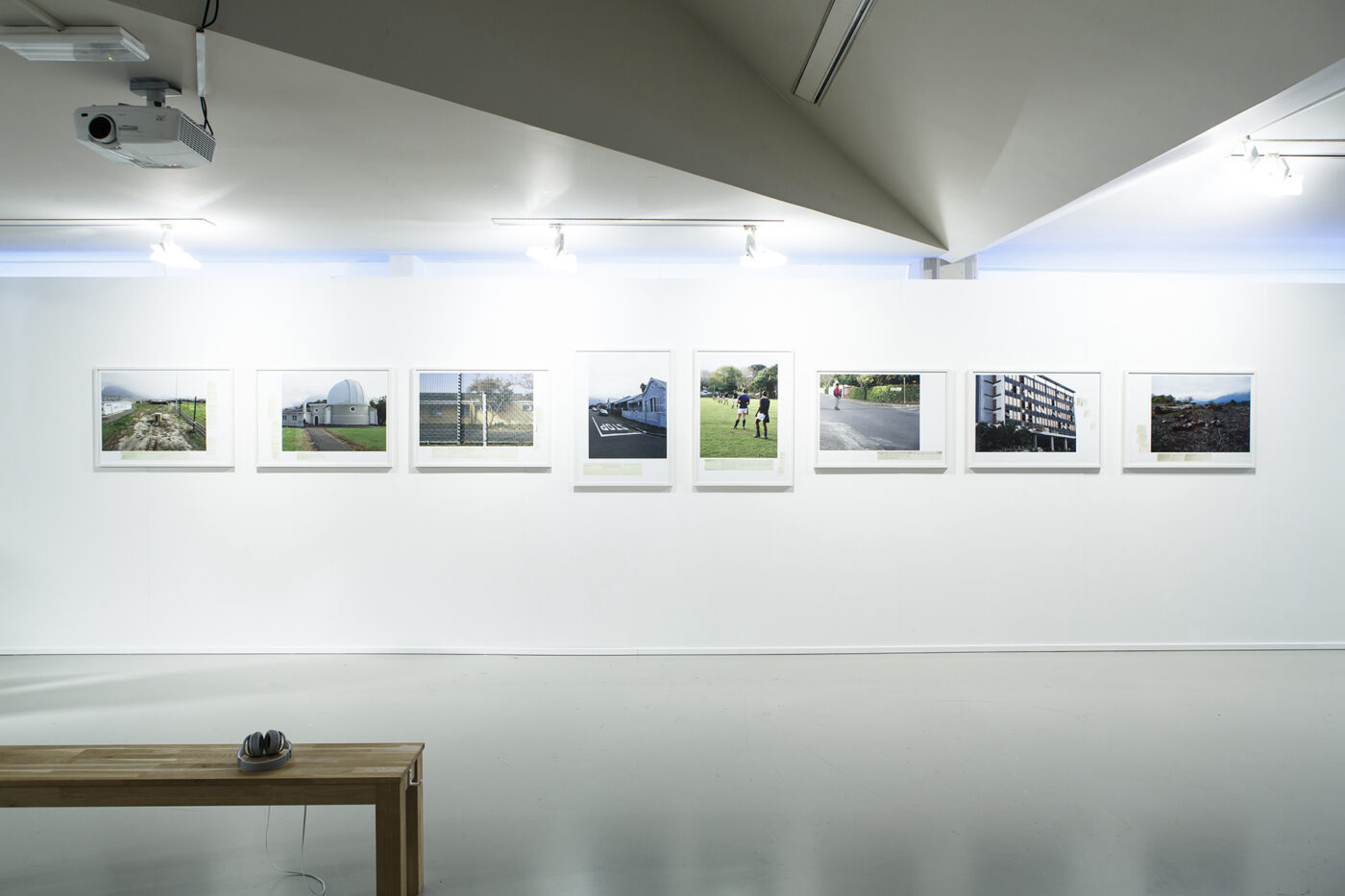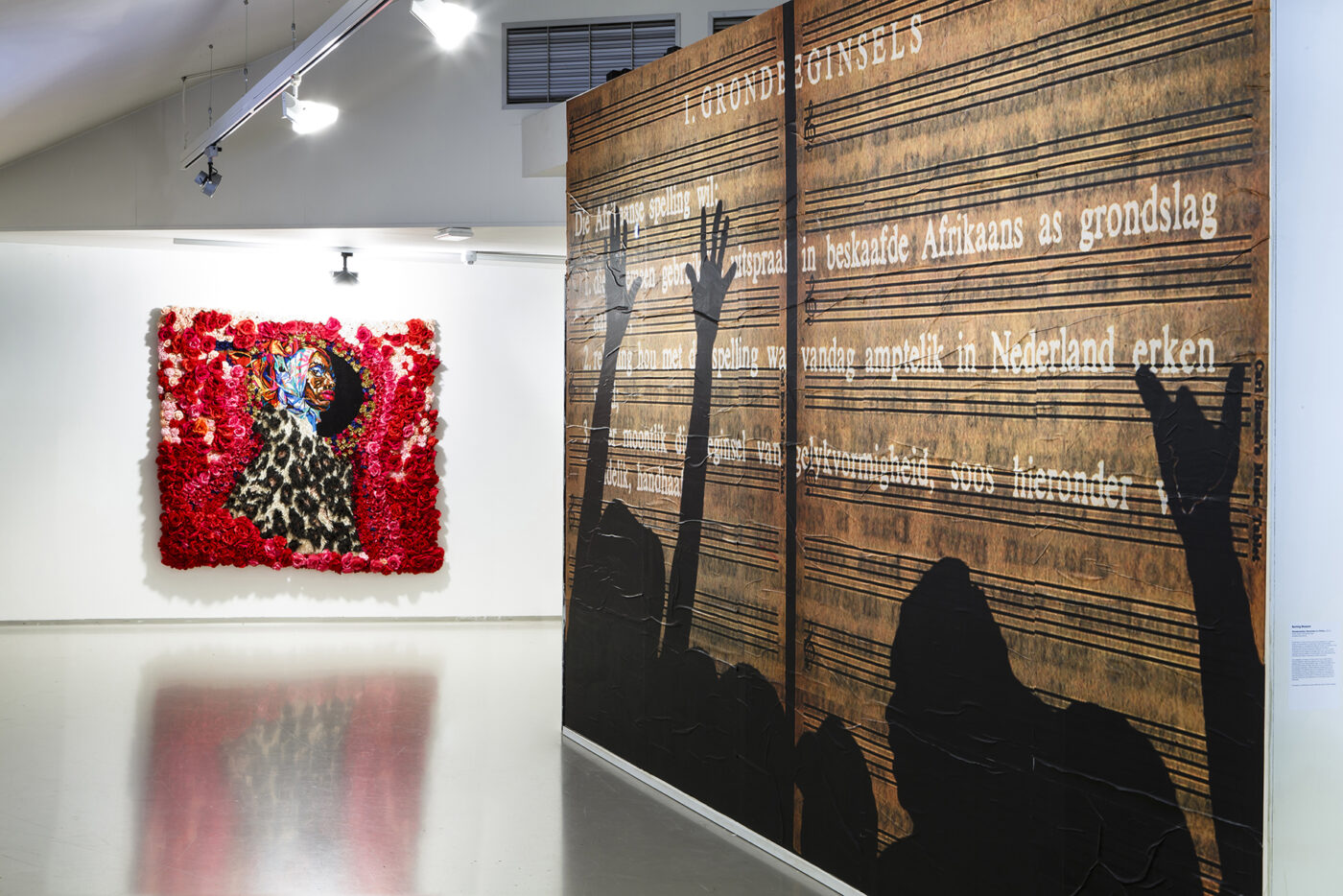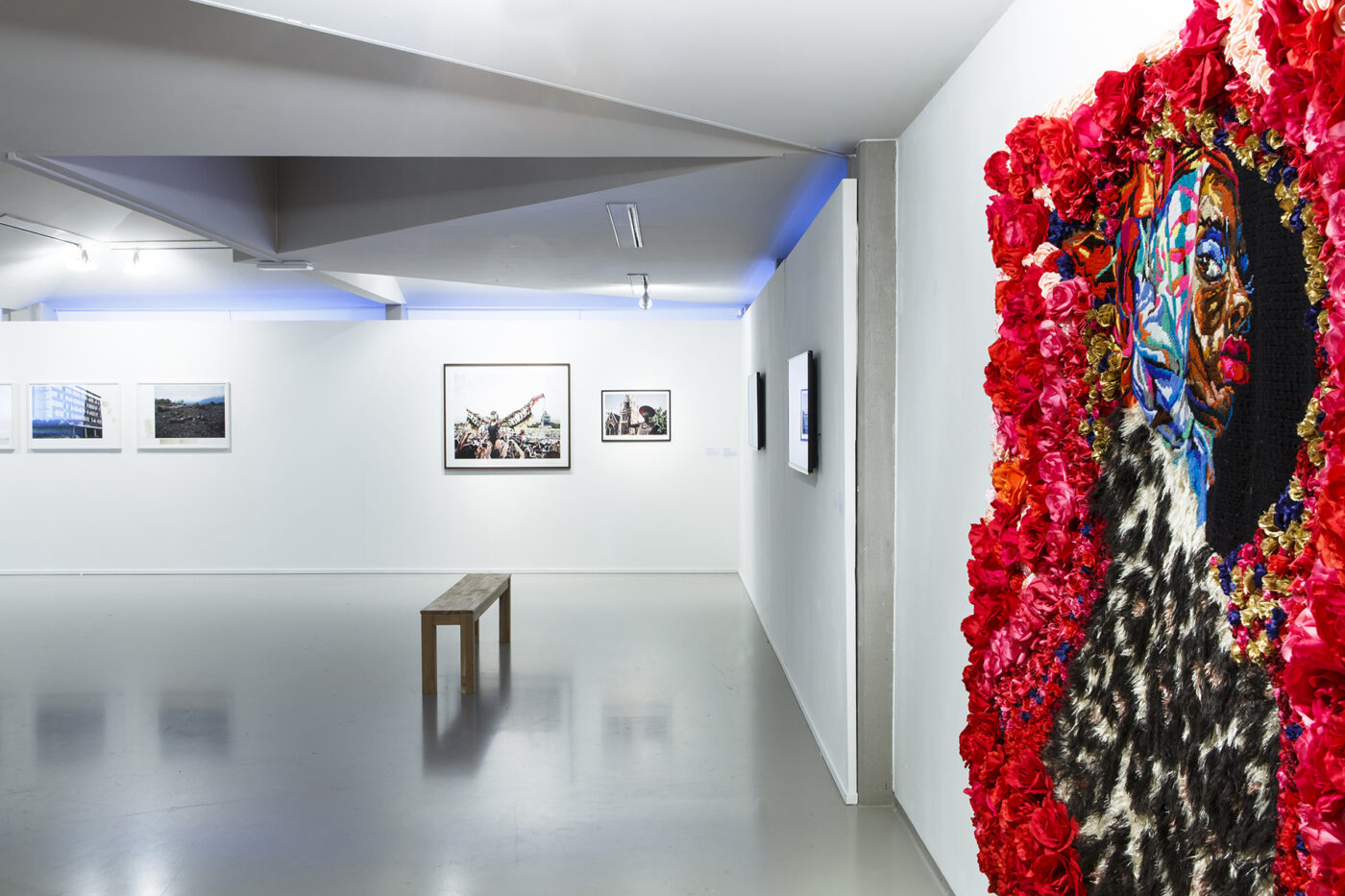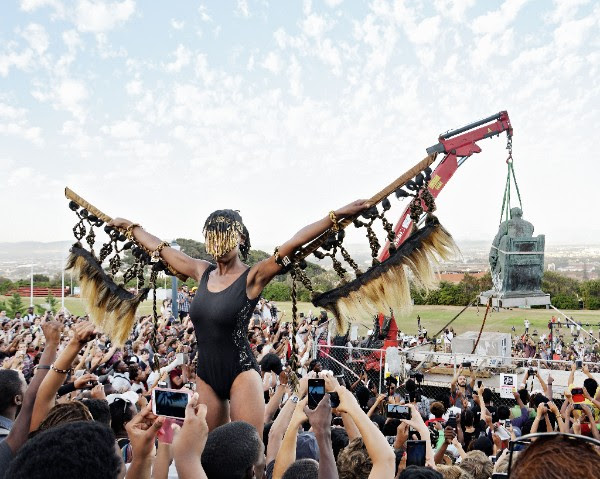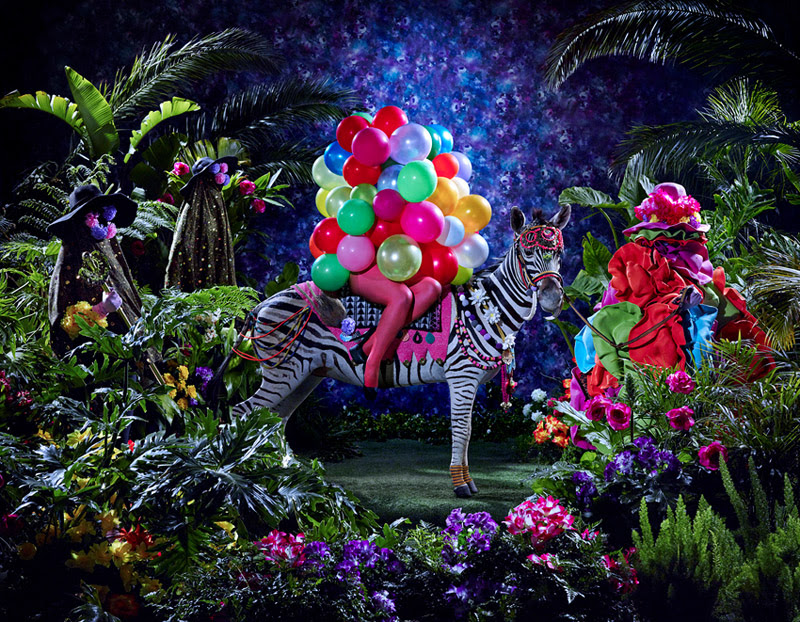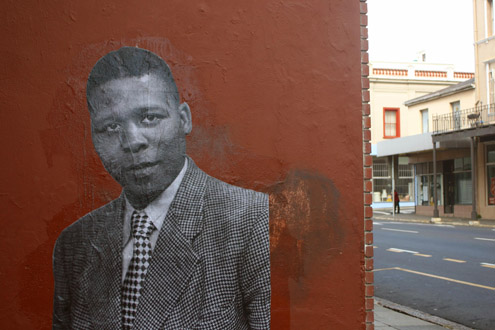Re(as)sisting Narratives: Exploring The Past To Write The Future
The exhibition Re(as)sisting Narratives opened on Sunday 28 August 2016 at Framer Framed in Amsterdam (NL) and 23 November at the District Six Museum in Cape town (SA). The show is the result of a 2-year project involving both Dutch and South African institutions, art professionals and artists. Through the exploration of lingering legacies of colonialism between South Africa and the Netherlands, the show addresses multiple subjects such as race, gender, or memory. In her interview with IAM, curator Chandra Frank shares her views on the role of archiving and art archiving.
IAM: The first question is related to the ‘futurity of the archive’ – how do you, as a curator, see archiving moving forward? With rapid digitisation and the influx of databases, will these methods continue to be appropriate?
Chandra Frank (CF): I see the archive existing in multiple forms and shapes. Archives enter the exhibition space in various ways and I am interested in unpacking these processes. In my view, archives are constantly moving and shifting. Sometimes archives indeed move us forward, but when dealing with lingering colonial legacies, archives sometimes prevent a moving forward.
For instance, there is so much paper trail and documentation of coloniality within the Dutch context. Violent documentation as Saidiya Hartman suggests often needs to be read “against the grain”. We need to readdress these archives and question what these archives reveal about coloniality, race, gender and class. Through doing so, we are able to interrogate memory and its relationship with the making of history. Thinking through the ‘futurity of the archive’ is key because some of our histories are locked out of official narratives or simply not told. Which obviously does not mean they are not there; many communities have relied on oral histories, or keeping hidden archives under beds, ceilings and in trunks.
I am inspired by work done by black and brown queer artists and scholars that navigate the necessity of future archives. I think we need to critically question the rapid digitisation and influx of databases. For one, because these are also made, systems are created in certain ways that may include particular narratives while excluding others. Tagging or filing systems in this sense are also biased. Sometimes we lose narratives in what we try to preserve. In this sense, I think we need to re-conceptualise the notion of the archive and to broaden its meaning and purpose. Archives are also embodied. I believe we walk with archives daily and I see myself to be part of what Stuart Hall calls a ‘living archive of the diaspora’. I am interested where and when these narratives end up in the exhibition space. Trying to make sense of our histories is a continuous project. More traditional forms of archiving are constantly refigured and discussed differently, and I think conversations on this will continue to be held. At the moment I am inspired to think through archives of pleasure, intimacy and the relationship with art. This to me underlies much of the future queer and the making of black and brown archives.
IAM: There has been much debate in and around the documenting and archiving of art. How do you view the archiving of art in the developed digital age we are living in?
CF: I feel there is an intrinsic relationship between arts and archives, as artworks in many ways also become an archive. Yet, it is helpful to make a distinction between ‘archives’ and the ‘act of archiving’. What does it look like when we archive art? And how do we archive critical moments? One of the artists in the show, Sethembile Msezane, started doing performance art to draw attention to the absence of the black bodies of women in memorialised public spaces in South Africa. The Rhodes Must Fall movement addressed the colonial statue of Cecil Rhodes on campus and long standing issues of structural racism and violence within the institution. On the day the statue would come down, Msezane prepared her costume [the character that she portrays here is Chapangu, the statue of the Zimbabwean bird that was wrongfully appropriated from Great Zimbabwe by Cecil Rhodes] and stood in front of the removal of the statue whilst students in front of her captured her and the statue came down. Here, resistance, art and the act of archiving all come together in the same moment. The digital age that we live in made it possible for this iconic image to spread online and to reach audiences throughout the world. Performances can be fleeting and restricted to a certain time and place. However, archiving a performance can sometimes capture the poetics of that very moment.
These sites are highly political, and the continuous documentation of protest is key. I think its important to understand how the boundaries between art and archives blur, and to question who takes responsibility for archiving. Art and exhibitions can be archived and documented in many shapes and forms, depending on how we perceive the archive. I am interested in having conversations with artists on how archives come up in their work and how this alters the process of archiving. Personally, I would like to archive more of the process, through writing or conversation. And I am glad to have moments and gatherings in living rooms and kitchens, or during walks where we can also sit in our joy and share food. That too, is part of archiving art and creative processes to me. Those safe quiet spaces are also necessary for reflection and to make sense of the complexity of the digital world.
IAM: The “Burning Museum” collective (who took part in the exhibition) utilise photographic posters known as ‘wheat-pastes’ in their work to reproduce and reimagine archival photographs. How have these artworks been received in the Netherlands? Is there a similar medium used by local artists or would you say this is a uniquely South African graphic form of expression?
CF: I think their work stirs up a lot of painful often-silenced narratives in the Dutch context. During the public intervention Framer Framed and the Burning Museum did on Steve Bikoplein, a square in the Amsterdam neighbourhood called the Transvaal buurt, we discussed the issue of gentrification and the complexity of having street names that refer to the Anglo-Boer War and Afrikaner histories. This area speaks directly to one of the main issues in the relationship between South Africa and the Netherlands. The Dutch are very quick to commemorate their role in the anti-apartheid movement, but are very hesitant to look at the much longer history of racial oppression and structural violence they enforced. Ironically within the Dutch cultural landscape it becomes clear that there is a lot of misplaced attention for topics such as the so-called “Afrikaner genocide” and the dying out of the Afrikaans language [members of parliament actually went to South Africa to investigate this], while other issues such as the effect of European owned housing and capital in South Africa remains unchallenged. In this sense, I think there’s a kinship between Afrikaners and white Dutch people that could benefit from a closer examination. In Dutch Racism Melissa Steyn published a chapter called De la Rey, De la Rey, De la Rey: Invoking the Afrikaner Ancestors that speaks to Afrikaner history and its glorification. We also still have the De la Rey Street in the Transvaal buurt, where actually two members of Burning Museum stayed. Burning Museum put up an image of two boys from the Van Kalker Photography Studio, which is layered with the 1913 Land Act. In this sense, forced removal and gentrification are in direct conversation with each other. The fact that this piece is now part of Steve Bikoplein is very powerful. I think it speaks directly to the fact that coloniality is not simply thereor here. In the work of Toni Stuart this also becomes clear, in the narration of Krotoa-Eva’s story, it’s apparent that these histories live within the borderlands of coloniality. I feel that it’s beautiful to have a woman’s voice make these histories touch.
During the intervention a white woman felt the need to question white poverty in South Africa and stated that people in her family also suffered during the Boer war, I think this exemplifies what Gloria Wekker addresses in her recent book titled White Innocence and addresses the fragile state of whiteness overall.
I have not seen the same method used by Dutch artists here in the public space, although there are important public interventions, for instance Framer Framed and the Indo community members did the intervention Hacking History (2012) at the Van Heutsz monument in Amsterdam that symbolizes the Dutch rule in Indonesia. To me this also shows, that we are connected through these colonial histories. South Africa has a long history of using posters as a medium to address the political reality. I would say graphic art has been a powerful form of resistance in the context of South Africa. In the Dutch feminist archives, I found protest and solidarity posters by black and brown feminist movement active in the Netherlands during the 1980s very interesting. I feel the narratives of protest by black and brown women are often left out in struggle histories, despite their role proving pivotal. Now, with the Fees Must Fall Movements, posters are again utilized to address the coloniality of academic institutions.
Judith Westerveld, Echolocation (2016). 8 Piezography prints on Hahnemüle White Velvet paper, 81,1 x 56,4 cm. Opening Re(as)sisting Narratives at Framer Framed, photo (c) Lara E. Tompa, Pixolar Photography.
IAM: What are your perceptions of South Africa’s narrative, twenty-two years after the first democratic elections? Has the country achieved democracy? Is democracy advancing and what role do you see art playing in its development?
CF: I’m not sure about the meaning of the words “democracy” and “advancement”. I feel these words have an awkward relationship with each other, especially when democracy is seen as the end goal. I guess my main question is advancement for whom? And what does democracy mean in a country where the wealth and land is not given back to black people? The very words “giving back” already imply that democracy (whatever its meaning) is hard to attain.
In Judith Westerveld’s work she reads diary fragments from Jan Van Riebeeck. In this example he clearly contemplates this question of ownership. He’s more than an obscure figure in the sense that he pondered knowingly about the fact that the land was not his to own. Yet, we all know what happened when these Dutch settlers started acting as the rightful owners. Moreover, Jan Van Riebeeck’s arrival signified the beginning of South Africa’s history. There is such a long and important history before his arrival. My point is, the ending of apartheid is seen as the start of democracy and I am not sure of how that works taking into account the persistent lingering legacies of white supremacy. Further, I am conscious of the fact that I didn’t grow up in South Africa, my father left Durban in the 1970s and most of my early experiences of what South Africa meant came through him and his community in London and Amsterdam. I have been raised, however, with a strong sense of the violence inflicted through the apartheid regime, and experienced how that traumatized many in exile. My experience and relationship with South Africa is of course different to those who grew up there, so I am conscious of my own positionality as a brown woman who traverses Dutch and South African Indian heritage.
I think the arts play a crucial role in the political landscape in the sense that they hold up a mirror that often reflects that what still remains unaddressed in the “new” South Africa. Again, I think Sethembile Msezane’s work is a key example of this, as well as Mohau Modisakeng’s work that addresses the relationship between violence and peace, ritual and healing, and masculine and feminine energies. Exploring the effects of violence on the black body is central in his work.
Mary Sibande, Conversations with Madam CJ Walker (2009). Mixed media installation. Opening Re(as)sisting Narratives at Framer Framed, photo (c) Lara E. Tompa, Pixolar Photography.
The work Conversations with Madam CJ Walkerby Mary Sibande also addresses the transnational context of the role of art as it brings up diasporic connections. In this sense, I don’t think that art necessarily advances democracy, but that it asks us to pause and reflect on how past and present blur and become less and less linear and to rethink how geographies are made and remade. In general, I think the work of many contemporary South African artists address the need for structural transformation.
IAM: If you were to imagine and contextualise the South African artistic landscape in 2026 through your lens as a curator, lecturer and researcher, how would you describe/predict it?
CF: That’s a hard question, I don’t think I can describe or predict it. If anything I think it will continue to provoke and inspire. It would definitely be interesting to think about what it would look like if different art scenes and markets work more closely within the Global South. It remains difficult for multiple valid reasons to have a dominant North – South relationship in the art world. Within the artistic landscape, I imagine the connection between young black consciousness movements and technology to be continuously explored as well as different portrayals of womanhood. There’s such power in new media and the power that lies in sharing events, protest and resistance. Simultaneously, for people of colour there’s such power in passing on spiritual rituals and sacred forms of knowing, in the sharing of space and creation of intimacy. It offers great resilience, I believe. It has always formed and will form a base for seeing the debates within the artistic landscape. It is clear that collectives such as iQhiya are so necessary. In 2026, one would also hope the art world will be less white and male. I’m sure people said the same thing 10 years ago. I think especially the commercial gallery world is moving rather slowly in its process to attain change. And the same can be said for academia. The answer that things take time is quite frankly just boring. I imagine people will keep on addressing these void systems while focusing on their own work, stories and histories. There’s so much speculative fiction waiting to be told. I think this is what inspires me most in the work of Mary Sibande and Athi-Patra Ruga. Both point to imagining different futures and different ways of being.
IAM: What is your definition(s) of ‘Azania’?
CF: To be honest, I don’t think its up to me to give or think of definitions of Azania. I am very pleased and inspired to have the work of Athi-Patra Ruga in the exhibition that is part of his on-going series The Future White Women of Azania. His use of the apartheid era’s fiction of Azania as a Southern African decolonized arcadia provides a home for colourful characters adorned with balloons, politically embroidered land maps and responses to the nation state. What is powerful in his work is that race, sexuality and gender converge in this fictional imagining. To make these histories part of Azania means not separating blackness from queerness. Ruga’s Azania is an ongoing conversation with what it means to dream. Identity formation is not an easy and peaceful process, this too I think is part of Ruga’s Azania.
Interview by Daniel Hewson
originally published on www.iam-africa.com
Koloniale geschiedenis / Het levende archief / Omstreden erfgoed / Zuid-Afrika /
Exposities
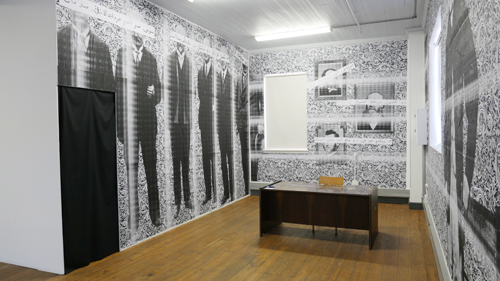
Expositie: Re(as)sisting Narratives in Zuid-Afrika
De tentoonstelling richt zich op de gedeelde koloniale geschiedenis tussen Zuid-Afrika en Nederland en omvat werken van kunstenaars uit beide landen

Expositie: Re(as)sisting Narratives
Over de gedeelde koloniale geschiedenis tussen Zuid-Afrika en Nederland. Curator: Chandra Frank
Netwerk
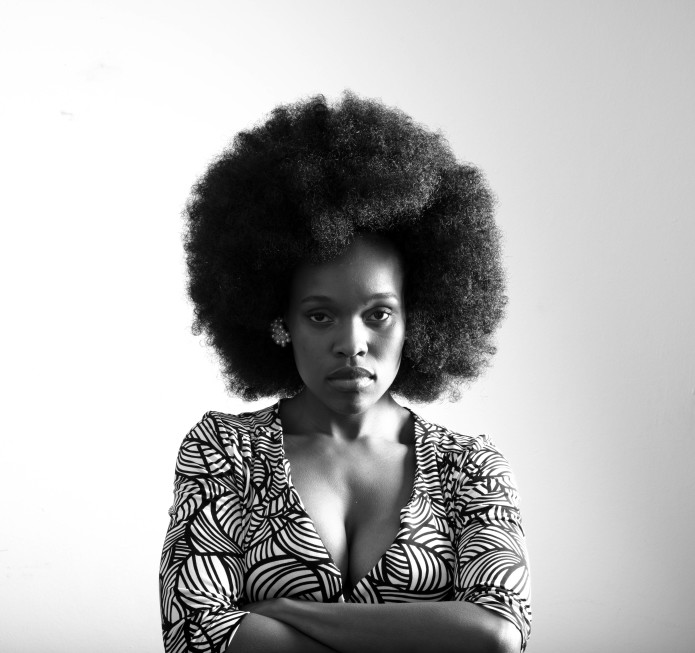
Sethembile Msezane
Kunstenaar
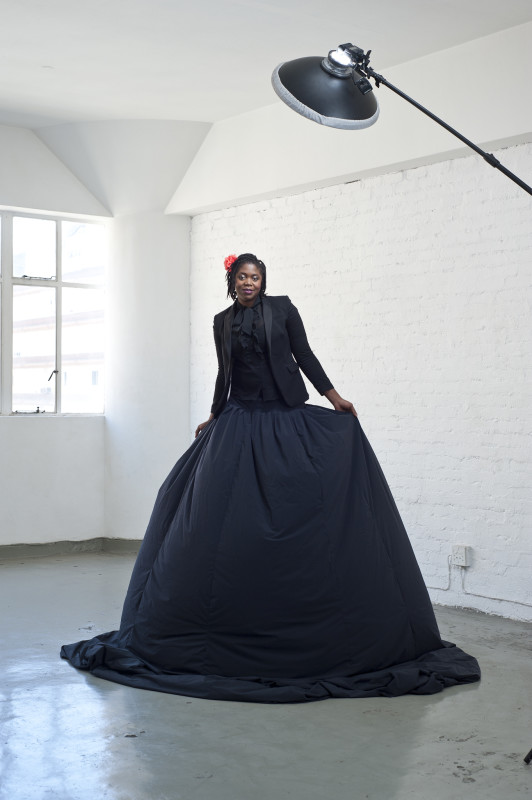
Mary Sibande
Kunstenaar
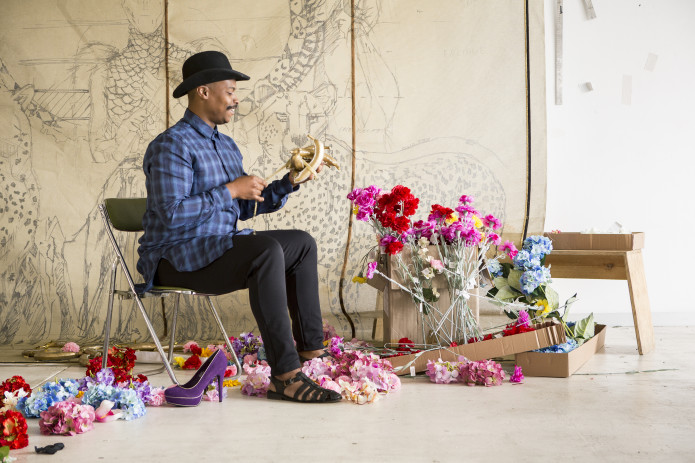
Athi-Patra Ruga
Kunstenaar
